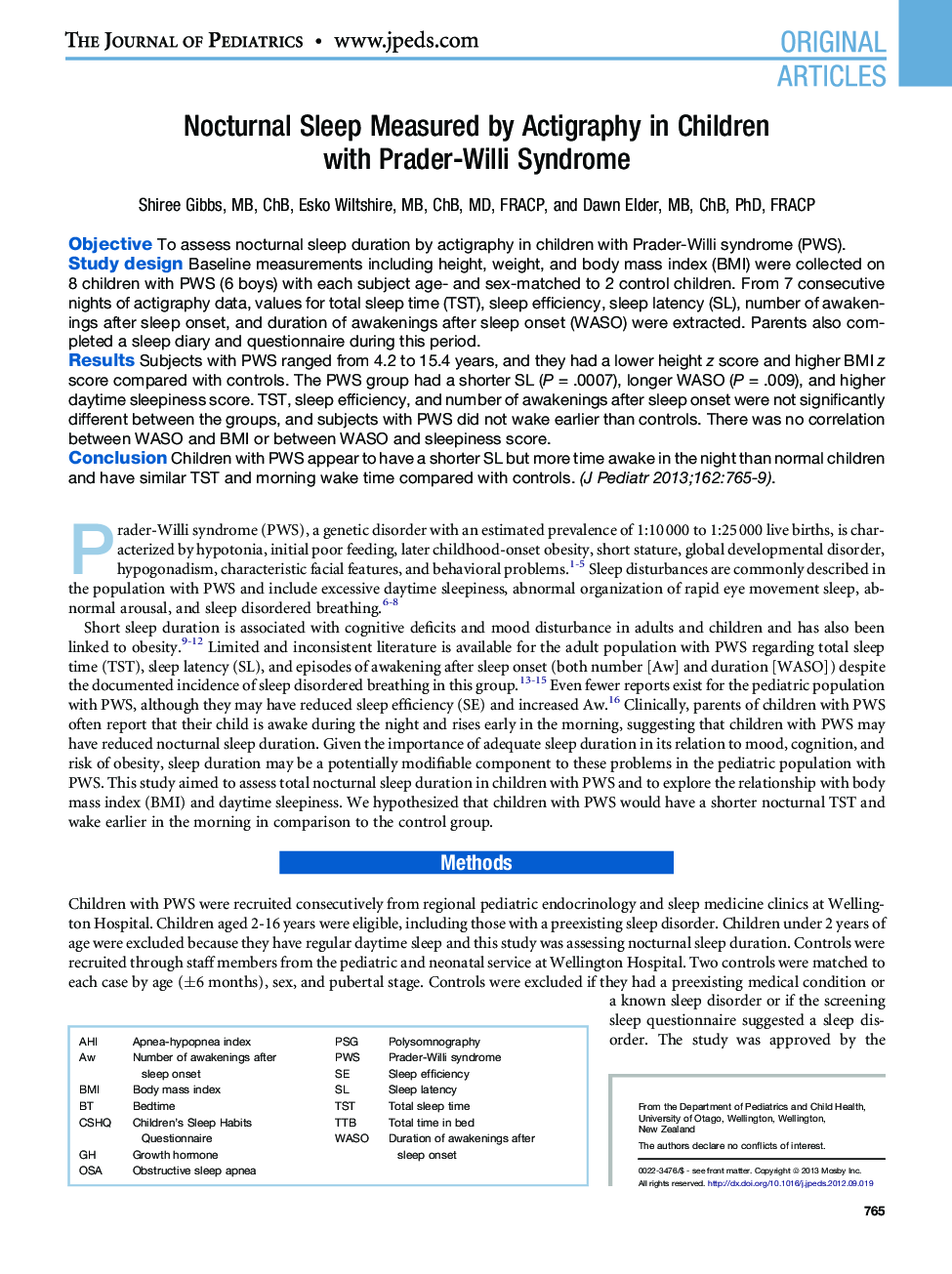| Article ID | Journal | Published Year | Pages | File Type |
|---|---|---|---|---|
| 6223996 | The Journal of Pediatrics | 2013 | 5 Pages |
ObjectiveTo assess nocturnal sleep duration by actigraphy in children with Prader-Willi syndrome (PWS).Study designBaseline measurements including height, weight, and body mass index (BMI) were collected on 8Â children with PWS (6 boys) with each subject age- and sex-matched to 2 control children. From 7 consecutive nights of actigraphy data, values for total sleep time (TST), sleep efficiency, sleep latency (SL), number of awakenings after sleep onset, and duration of awakenings after sleep onset (WASO) were extracted. Parents also completed a sleep diary and questionnaire during this period.ResultsSubjects with PWS ranged from 4.2 to 15.4 years, and they had a lower height z score and higher BMI z score compared with controls. The PWS group had a shorter SL (PÂ =Â .0007), longer WASO (PÂ =Â .009), and higher daytime sleepiness score. TST, sleep efficiency, and number of awakenings after sleep onset were not significantly different between the groups, and subjects with PWS did not wake earlier than controls. There was no correlation between WASO and BMI or between WASO and sleepiness score.ConclusionChildren with PWS appear to have a shorter SL but more time awake in the night than normal children and have similar TST and morning wake time compared with controls.
